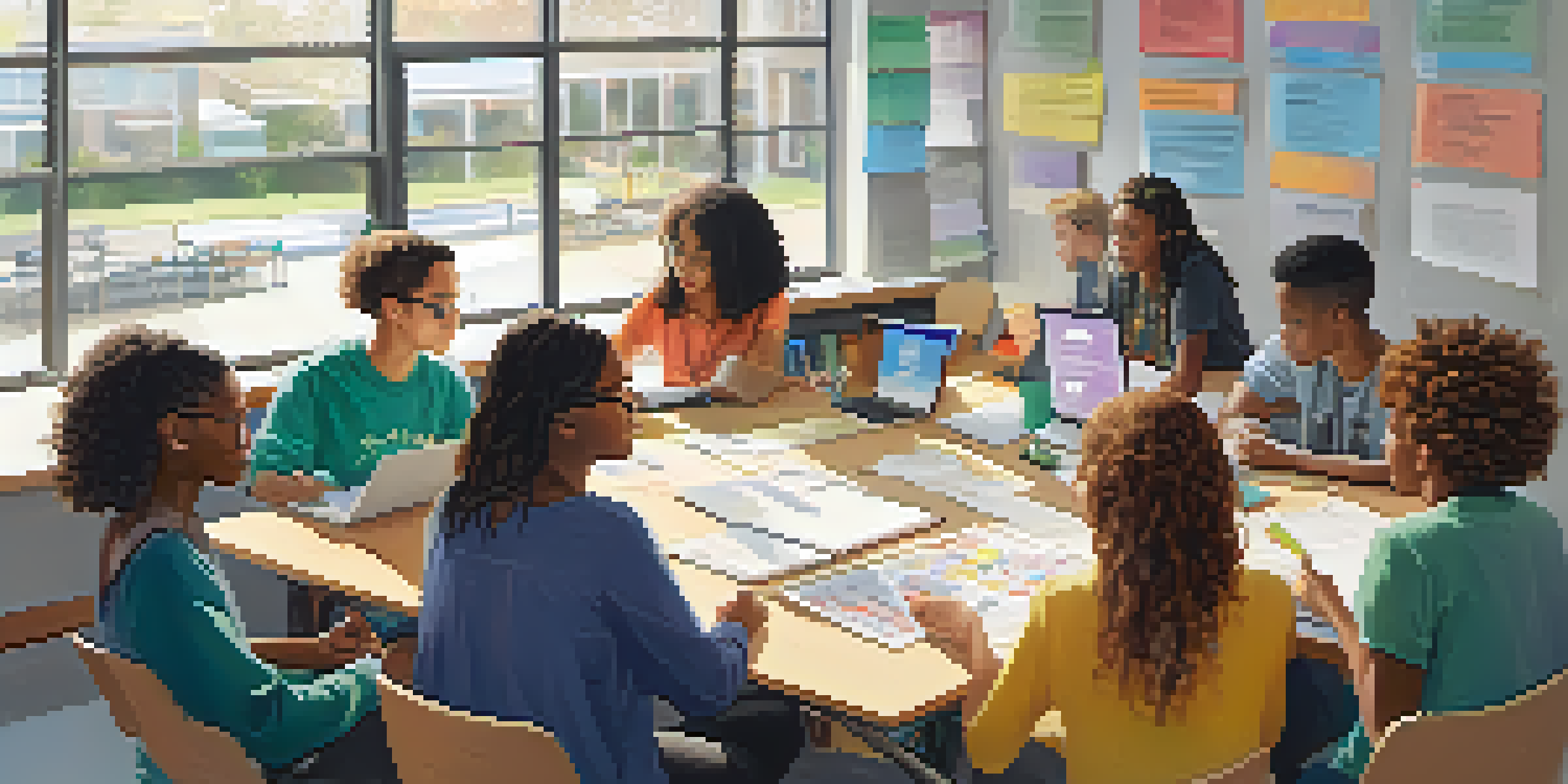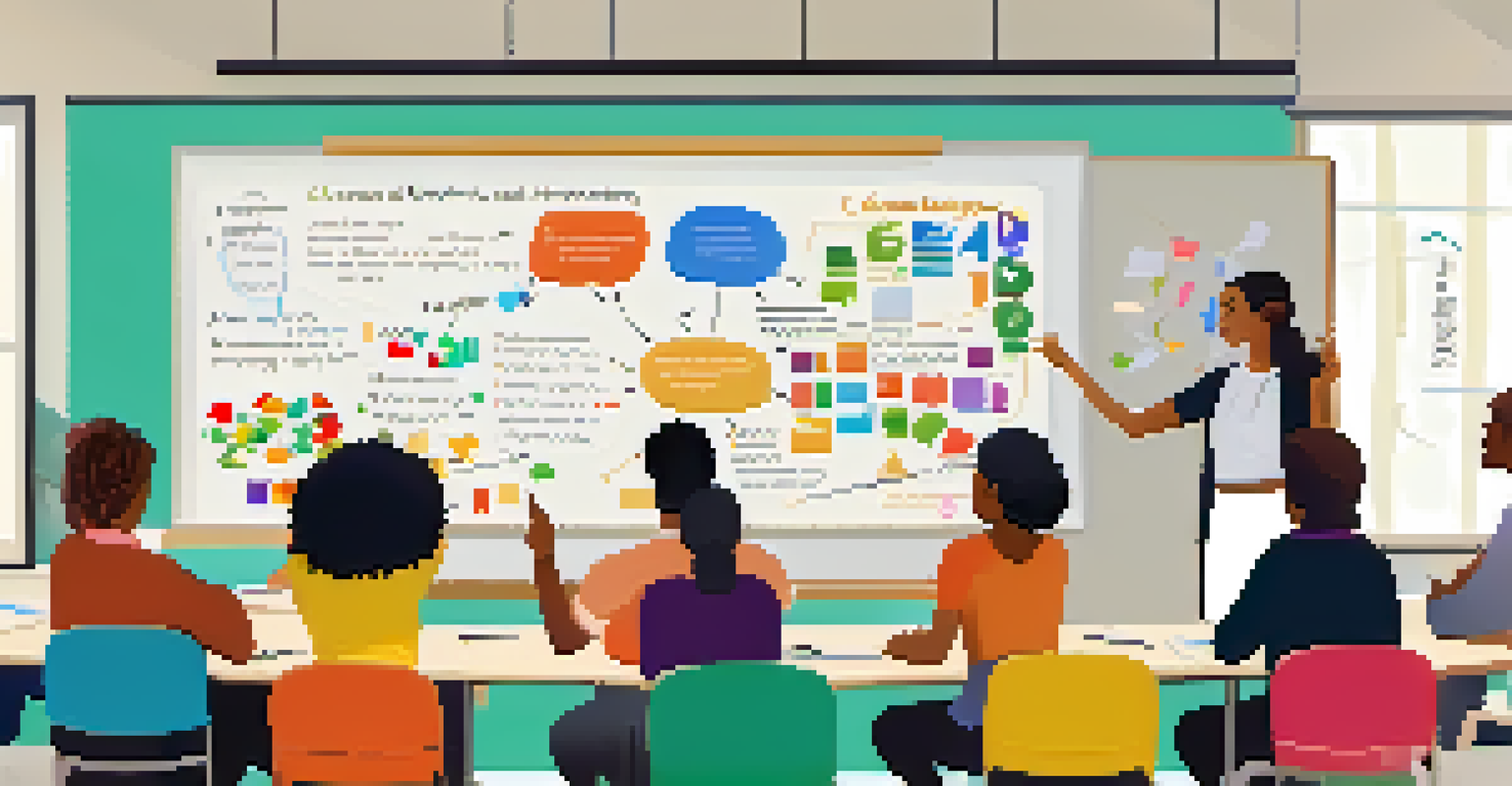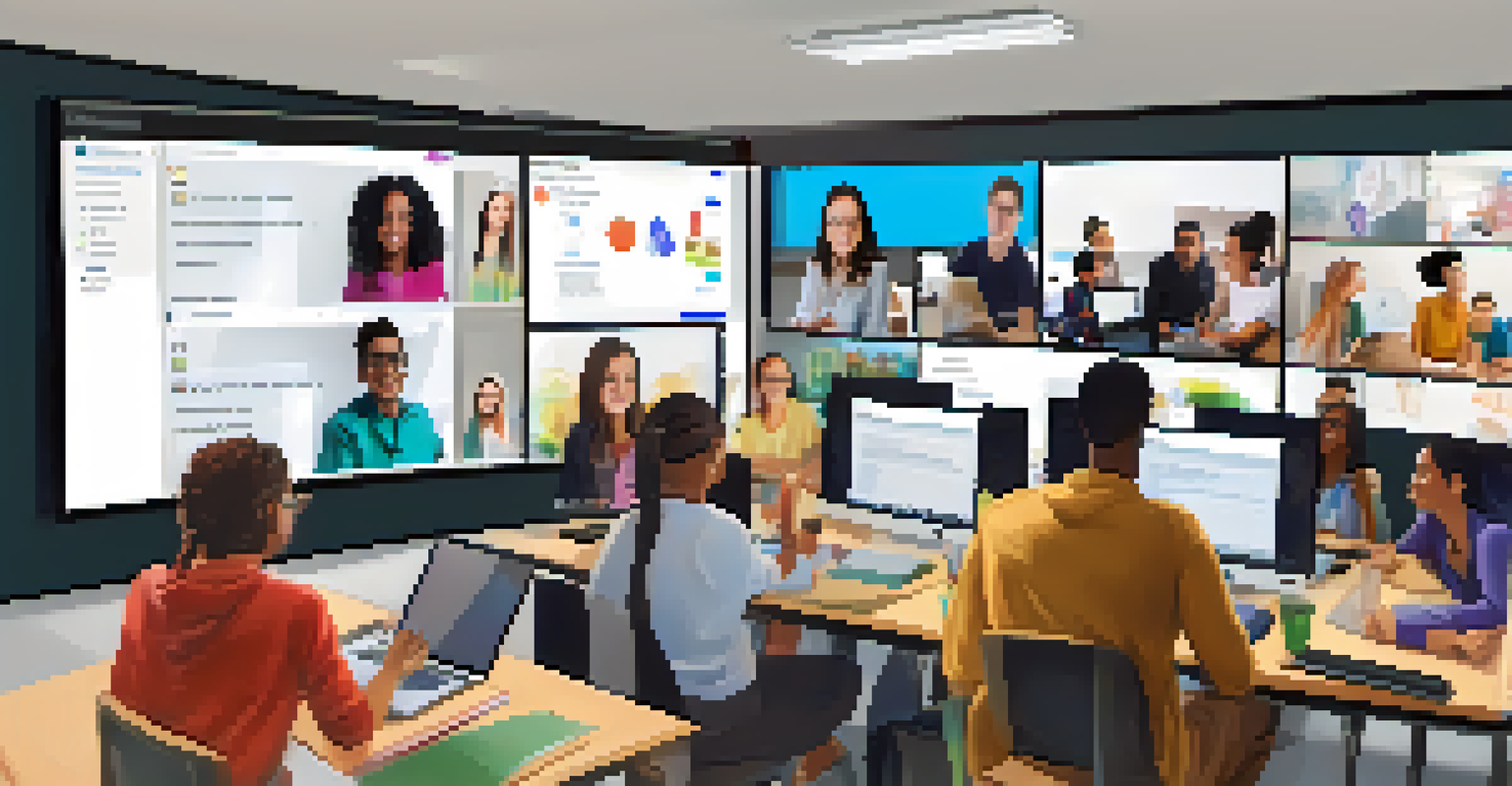Utilizing Collaborative Learning to Foster Critical Thinking

Understanding Collaborative Learning and Its Benefits
Collaborative learning is an educational approach that involves students working together to solve problems or complete tasks. By engaging with peers, learners can share diverse perspectives, which enriches the overall learning experience. This method fosters a sense of community, encouraging students to support each other in their educational journey.
Alone we can do so little; together we can do so much.
One of the primary benefits of collaborative learning is the enhancement of critical thinking skills. When students collaborate, they are challenged to analyze information, evaluate different viewpoints, and synthesize new ideas. This process not only deepens their understanding of the subject matter but also prepares them for real-world problem-solving.
Additionally, collaborative learning helps students develop essential soft skills such as communication, teamwork, and conflict resolution. These skills are crucial in both academic and professional settings, making students more effective collaborators and leaders in the future.
The Role of Critical Thinking in Education
Critical thinking is the ability to analyze situations, evaluate evidence, and make informed decisions. In today's fast-paced world, it is more important than ever for students to develop these skills, as they will need them to navigate complex challenges in their personal and professional lives. Education systems are increasingly recognizing the need to prioritize critical thinking in curricula.

Incorporating critical thinking into collaborative learning environments allows students to practice these skills in a supportive setting. As they engage with their peers, they learn to question assumptions, assess credibility, and construct logical arguments. This not only enhances their cognitive abilities but also builds their confidence in expressing their ideas.
Collaborative Learning Enhances Skills
This educational approach boosts critical thinking, communication, and teamwork among students.
Moreover, fostering critical thinking through collaboration prepares students for a globalized society where diverse viewpoints are commonplace. Students learn to appreciate different perspectives, which equips them to work effectively in multicultural teams and think critically about global issues.
Designing Collaborative Learning Activities
To effectively implement collaborative learning, educators must design activities that promote interaction and engagement among students. These activities should be structured to encourage teamwork, such as group projects, case studies, or peer teaching. Clear guidelines and defined roles help ensure that all students contribute meaningfully to the task at hand.
The greatest danger in times of turbulence is not the turbulence; it is to act with yesterday's logic.
It's essential to create a safe and inclusive environment where students feel comfortable sharing their thoughts. This can be achieved by setting ground rules for respectful dialogue and encouraging active listening. When students feel heard and valued, they are more likely to engage deeply in discussions and challenge each other's ideas constructively.
In addition, incorporating technology can enhance collaborative learning experiences. Online platforms and tools enable students to connect and collaborate beyond the classroom, making it easier to share resources and ideas. This flexibility allows for the exploration of topics in greater depth and fosters continuous learning.
Assessment Strategies for Collaborative Learning
Assessing collaborative learning can be challenging, as it requires evaluating both individual contributions and group dynamics. One effective strategy is to use peer assessments, where students provide feedback on each other's performance. This not only encourages accountability but also helps students reflect on their own learning and collaboration skills.
Additionally, educators can assess the final outcomes of group projects while also considering the process. For instance, keeping track of group discussions, planning documents, and individual reflections can provide valuable insights into how well students collaborated and engaged with critical thinking.
Critical Thinking is Essential Today
Students must develop critical thinking skills to navigate complex challenges in their personal and professional lives.
Rubrics can be particularly useful in setting clear expectations for both individual and group assessments. By outlining specific criteria, students understand what is expected and can strive to achieve those goals, ultimately enhancing their learning experience.
Overcoming Challenges in Collaborative Learning
Despite its many benefits, collaborative learning can present challenges, such as unequal participation or conflict among group members. To address these issues, educators should actively monitor group interactions and intervene when necessary. Encouraging open communication and providing conflict resolution strategies can help maintain a positive learning environment.
Another challenge is the varying levels of ability and motivation among students. To ensure that all learners are engaged, educators can assign roles based on individual strengths and preferences. This allows each student to contribute in a way that plays to their skills while encouraging them to develop new ones.
Moreover, it's essential to be flexible and adaptive in the face of challenges. Gathering feedback from students about their collaborative experiences can provide valuable insights into what works and what doesn’t. This ongoing reflection helps educators refine their approaches and ensure that collaborative learning remains effective and inclusive.
Real-World Applications of Collaborative Learning
Collaborative learning is not limited to the classroom; its principles can be applied in various real-world settings. For instance, in the workplace, teams often collaborate on projects, requiring critical thinking and effective communication. Skills developed through collaborative learning in education translate directly into these professional environments, enhancing productivity and innovation.
Moreover, community engagement projects often rely on collaborative learning principles. When individuals come together to address local issues, they must analyze problems, share ideas, and develop solutions collectively. This not only fosters critical thinking but also strengthens community ties and promotes social responsibility.
Real-World Applications Matter
Skills gained from collaborative learning are directly applicable in workplaces, community projects, and personal relationships.
Even in personal relationships, the skills honed through collaborative learning can lead to healthier communication and problem-solving. Whether discussing family matters or planning a trip with friends, the ability to think critically and collaborate effectively enhances interpersonal dynamics and decision-making.
Future Trends in Collaborative Learning and Critical Thinking
As education continues to evolve, the integration of technology in collaborative learning will play a significant role in enhancing critical thinking. Virtual classrooms and online collaboration tools enable students from different backgrounds to connect, share ideas, and learn from each other, regardless of geographical barriers. This trend promotes a more inclusive learning environment and fosters global awareness.
Additionally, educators are increasingly recognizing the importance of teaching metacognitive skills, which help students reflect on their thinking processes. By encouraging students to think about how they approach problems and collaborate with others, educators can cultivate a mindset geared toward lifelong learning and adaptability.

Ultimately, the future of education will likely emphasize the combination of collaborative learning, critical thinking, and technological integration. Preparing students for a rapidly changing world requires equipping them with the skills to collaborate effectively, think critically, and navigate complex challenges with confidence.